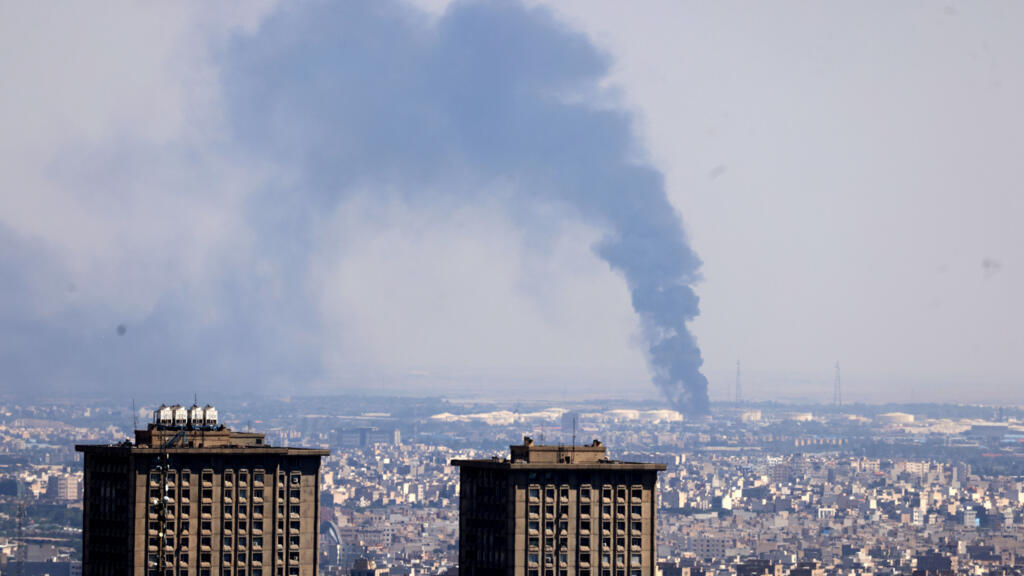India, the fourth largest economy in the world, is a desire to become a top power on the international political platform.
“India is emerging as a global leader in various aspects of technology, B It Space, AI [artificial intelligence]Digital innovation, green technology and more, “Indian Prime Minister Narendra Modi said on X last month.
However, some experts told DW that India’s global ambitions come at the cost of their relations with regional neighbors who have become hostile in search of New Delhi for regional suzerainty.
India’s rise comes in the form of economic instability and political fragility is threatening South Asia.
More than half of Afghanistan’s population has fallen below the poverty line as the Taliban has returned to power. Myanmar struggles with political instability under military rule. Pakistan, Sri Lanka and Bangladesh have moved to the International Monetary Fund for bailout, and India itself is facing an increase in communal violence.
China, meanwhile, is expanding its impact in South Asia through deepening the economic and strategic partnership.
Neighborhood first – on backburner?
After coming to power in 2014, Modi indicated the revival of India’s first policy, which aims to repair and consider his relations with countries in the region.
But at the London -based Chautham House, Senior Fellow Chetgz of South Asia said that on a decade, “Neighborhood is a weak component of India’s foreign policy.” He suggested that “there was a degree of benign neglect by New Delhi.”
Despite rhetoric for regional solidarity, India’s foreign policy has mainly focused on the US, Europe and East Asia instead of South Asia.
Bajpe said that India has little hunger to react to the South Asian Association for Regional Cooperation (SARC) in India, including a regional block, including Afghanistan, Bangladesh, Bhutan, India, Maldives, Nepal, Pakistan and Sri Lanka.
“Everyone except India is interested in reviving it,” Bajpe said, but said “India-Pakistan relations … reduces any possibility [reviving] SAARC. ,
Since 2016 and the hosts between Pakistan, the hosts effectively made Ferri effective when India withdrew from a summit in Islamabad after a deadly attack in Indian administration Kashmir.
Kanak Mani Dixit, Nepal -based writer and founder editor of Himal South Asian magazine, said that India has often taken unilateral views on regional issues.
Citing the launch of the SAARC satellite in 2014, Dixit said that Modi “sidelined the regional counseling.”
“The etiquette needs to talk with his neighbors,” Dixit said. “This strategic alofneness has expressed displeasure against India in countries like Nepal and Sri Lanka.”
Dixit said that other growing powers, most specially invested in the first regional network and then turned outward.
“China made regional before globalization. India is trying to vice versa,” Bajpe said.
Default opportunities
According to the World Bank, South Asia is now widely considered widely considered the lowest economic integrated region in the world.
The intra-regional trading sector barely makes 5% of the total trade. In contrast, Intra-A-A-Tread is about 60%.
“There is a strong market of 500 million people outside India in South Asia,” said Biswajit Dhar, a former economics professor at Jawaharlal Nehru University in New Delhi. He pointed to textiles, pharmaceuticals, energy and services, which is in the form of Arenas with large capacity.
“We studied the regional price chains for the Asian Development Bank. The supplementation was incredible,” Dhar said, “Given” the capacity is largely untrue due to narrow political controversies. “
Dixit echoed the spirit of the torrent, “This is the area that can be the most benefiting from business, and yet there is no one.”
Sri Lankan economist Ganesan Vignraja said that India can be financially benefited if he promotes the link close to its borders.
“If India neglects its neighborhood, it would be better, such as China, enter the neighborhood, and it will compromise on India’s national security,” Vignraja said.
India’s trade with Pakistan collapsed after diplomatic hosts, which deprived both sides of economic relations that could have promoted stability. China has already benefited from the regional margin by investing in Bangladeshi ports, Sri Lankan airports and Pakistani motorways.
India’s domination diplomacy
Dixit challenged what many people believe in India’s diplomacy.
“It would be liked that Dixit said that the rest of South Asia is being submitted” Dixit. “To perform well on the global stage for India, it will have to make a pece with his neighbors by accepting each sovereign relationship.”
Bajpe said that India “cannot control the politics of these countries. The era of areas of influence is not a Longer.”
In the past, India has abandoned long-term regional cooperation for short-term geopolitical alignment. Citing the Iran-Pakistan-India gas pipeline as an example, Dixit said it was released under former Prime Minister Manmohan Singh due to US pressure.
“If this had happened, we would have made forward and backward linkage for gas to maintain the flow, and this would have led to peace.”
Is India setting up a new diplomatic course?
India’s focus has moved to Indo-Pacific, Quad Group-Made Up America, Japan, Australia and India-West. However, for India’s durable, its boundaries will need to be stable.
“India’s engagement with East Asia is a hero hostage in instability in Bangladesh and Myanmar,” Bajpe said. “If it wants to attach more widely, there is a need to have good relations with the country on its borders.”
Dixit said that India’s global aspirations, which include their efforts to become veto power in the United Nations Security Council, are suffering from regional deficit. “A UNSC seat requires regional transactions. But when the region is in a mess and is not reaching India, it weakens its case,” he told DW.
Vignraja concluded that “India can do [perhaps] Get up alone – but it will be in a strong position if it can grow with its neighbors. ,
Edited by: Keith Walker


